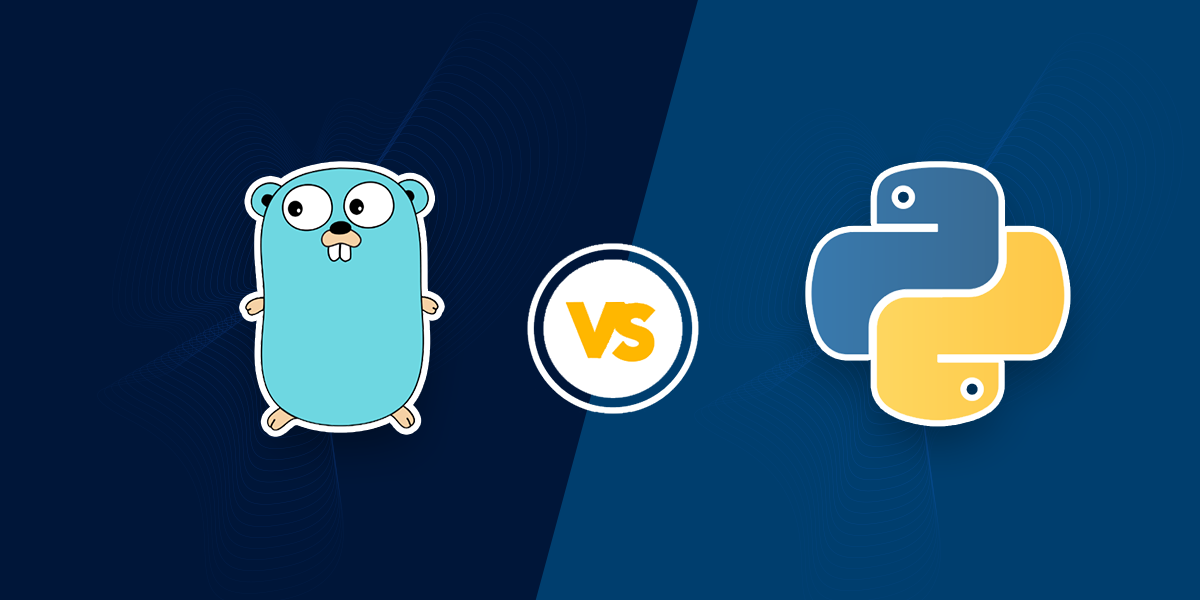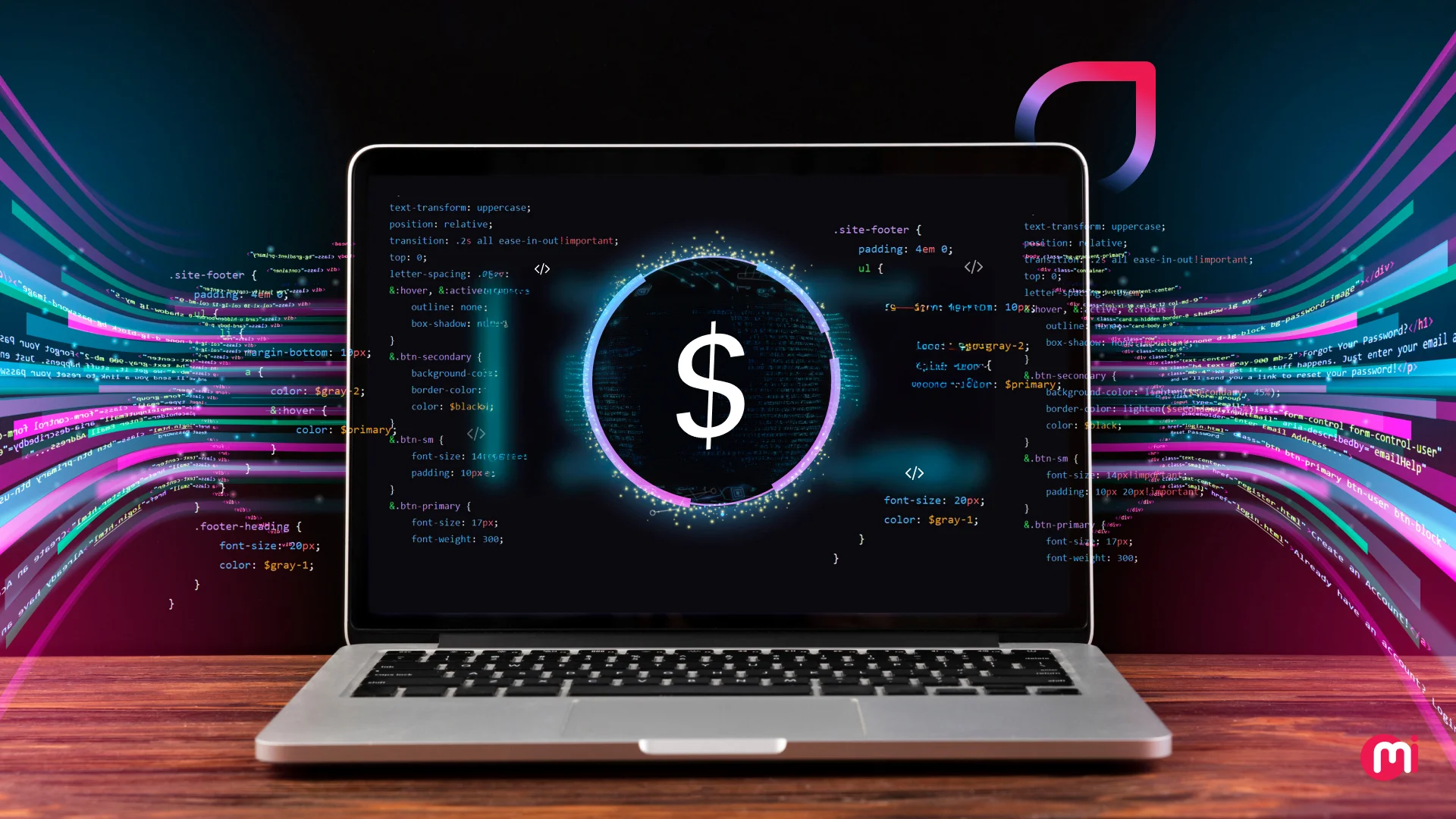Golang vs Python: Which Programming Language will Suit your Business?
- Web
- June 21, 2019
Choosing the most suitable programming language for your business is a diplomatic decision indeed. Prior to the commencement of any project, the development teams are likely to discuss which programming language complements their needs.
With too many options available, it becomes a tough move to shortlist the most relevant ones. You have C++, PHP, JavaScript, Go Language, Python and several others lined up before you. When you broil down these choices, you would end up with Golang and Python in most of the occasions.
Although Golang and Python are similar in a number of ways, their functional features vary significantly.
Here, you will get a comprehensive insight into these two programming languages: Golang vs Python. This will help you understand when to use them, and how each of them can help you.
Python Performance and Statistics
Python presently occupies the first position in the IEEE Spectrum ranking. The growth of Python web development has been incredible, and it is among the top six most extensively used programming languages.
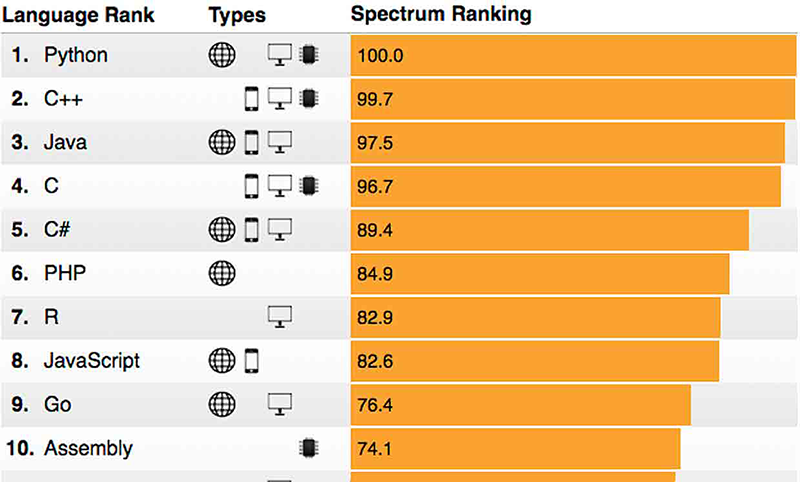
Have a look at the factors leading to the popularity of Python:
- Python comes with a long list of libraries, such as Pandas, Tensorflow, Scikit-learn, Pandas, Keras, NumPy and SciPy. This reduces the cost of the development cycle of the initial stages, besides saving time.
- Since Python is easy to apply, it is a great choice for startups. Eventually, it has emerged as one of the programming languages that are most easily accessible. The developers can seamlessly understand its syntax.
- Particularly, when you build datasets and analytical tools, Python appears to be your best choice.
All these features make Python a vital language for software development.
Golang Performance and Statistics
A report published by GitHub reveals that Golang, as a programming language, is the fastest growing in 2020. Golang is an open source language, and lightweight in nature. Evidently, this makes it suitable for microservices software architectures.
For instance, your e-commerce website receives customer’s orders, gets the inventory verified and ships the goods. In this case, each microservice is small.
When you use Golang to build the website, the maintainability of the site improves significantly. The application will have better deployability and testability.
Besides, in the previous quarter, the Golang industry has shown around 8.9% growth, along with a change of 1%.
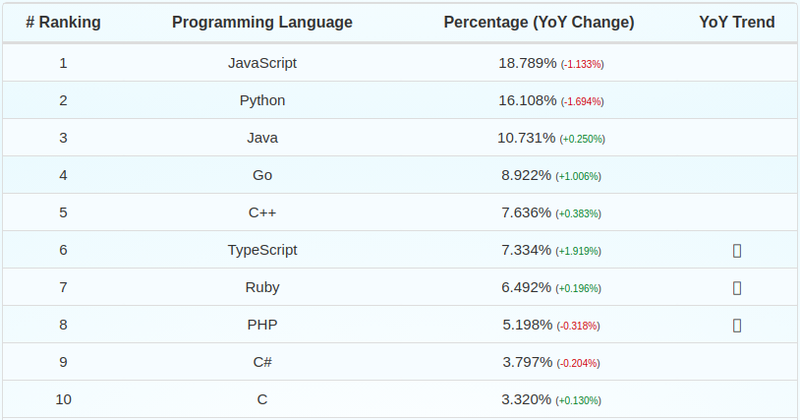
Have a look at the factors leading to the popularity of Golang:
- The Go Language is Cloud-native, and it is applicable for leading projects based on Docker and Ethereum.
- Since Golang is cross-platform, you can use a suitable operating system, when you compile the code.
- The developers can seamlessly install Golang and the quality of debugging is comparatively superior.
These factors have led to the extensive popularity of Golang.
Golang Vs Python: The Comparison Between Two Programming Languages
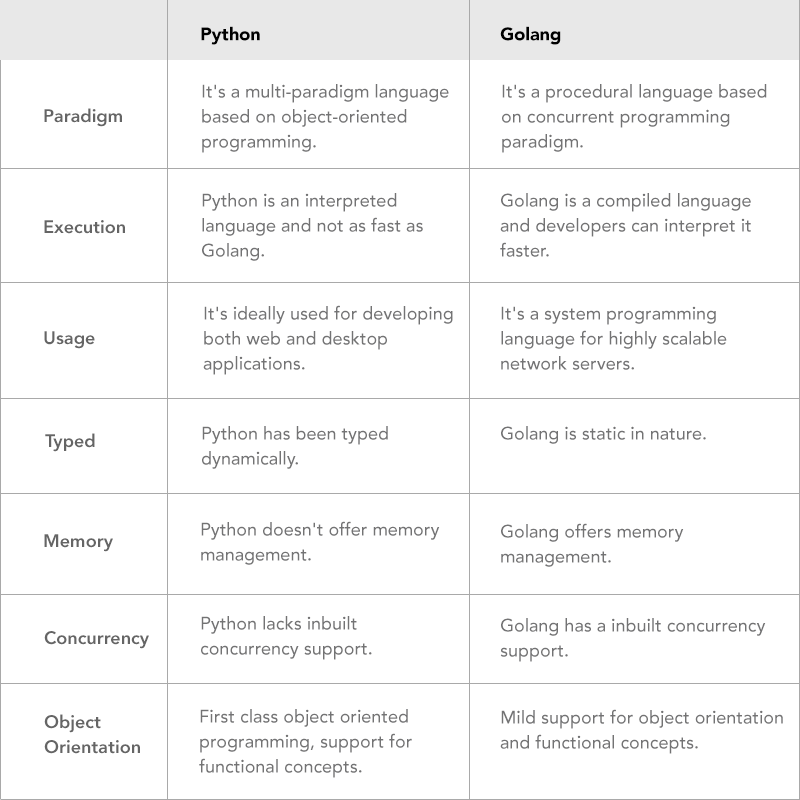
The following parameters have been used in the comparison between the two popular programming languages:
- Performance
- Scalability
- Applications
- Libraries
- Executions
Golang Vs Python: Performance
Golang is fast, and since the language is compiled, the developers can interpret it faster. Python, on the other hand, is an interpreted language and not as fast as Golang.
However, you might not consider speed as the most important factor in your software development process.
Python is fast enough to develop software within a standard completion time. It is not likely that performance issues will pop up, unless you achieve a significant scale.
In terms of dealing with concurrency, the approach is different for the two languages. For concurrency, Golang has a built-in support and it is resource-efficient. It also uses the goroutines, which do not demand much of the memory and CPU.
On the other hand, Python does not come with an inbuilt support to deal with concurrency. Instead, it depends on a concurrency library and therefore, it has a lower level of efficiency.
Python vs Golang: Scalability
The scalability factor was considered while developing Golang. Its purpose was to assist developers working at Google resolve issues at the scale of that particular company.
Evidently, it involves thousands of programmers who work on large server software, which was hosted on several clusters. Therefore, Golang comes with a built-in support for concurrency.
On the other hand, Python finds it difficult to deal with concurrency and it uses threads to implement parallelism. Concurrency indicates that an application is able to deal with more than a single task simultaneously.
Parallelism indicates that the task is split into smaller parts by an application. This can then be processed in parallel.
Evidently, if your project is large and scalable, you should use Golang, as it comes with an inherent support for concurrency.
Golang vs Python: Applications
You should note that each programming language comes with a specific purpose. For instance, people primarily use JavaScript for web development.
Python, likewise, is used for artificial intelligence, data analytics, web development and deep learning. It has some amazing libraries that make it easier to use the language.
The developers mainly use Golang for systems programming. As it supports concurrency, it can also be used for cluster computing and cloud computing.
Golang has gained a lot of popularity in web development, as it is easy to use the libraries and it is a powerful language. This allows the developers can set up the web servers in little time.
Python vs Golang: Libraries
As Python comes with a wide array of libraries and frameworks, it turns out to be a good choice for the developers. Two of the most popular web frameworks include Flask and Django. This helps the developers work on the web development process in a very short time.
Python also brings you an enriched collection of libraries in particular areas like forensics and data science. This ensures that the prototyping process can be completed in quick time.
Golang, in contrast, also comes with library support to an extent. However, it does not satisfy the developers to the extent that Python does.
Some developers argue that Golang is difficult to use due to the absence of important frameworks. Using a framework is important, particularly when you start a project, as it can save both money and time for you.
Read also: Top Web Frameworks for Development in Golang
Golang vs Python: Execution
As a programming language, Python has been typed dynamically. On the contrary, Golang is static in nature. Python uses an interpreter, while Golang uses a compiler.
In a language that is statically typed, the variable types are explicitly mentioned for the compiler. This helps it to detect even the most trivial bugs easily.
If the language interface is dynamically typed, it may not be possible to detect all the bugs. The interpreter may convey the information in an incorrect way, leading to bug issues.
Therefore, the programmer may face certain limitations while using Python, as it dynamically typed. Particularly, if the size of the program is big, it is recommended to use Golang.
To Wrap Up…
It appears that the developers need to choose the programming language after considering the nature and size of their projects. Each of these languages has its own pros and cons. Based on what you need, you should be choosing between Python and Golang.
The developers enjoy using Python as it has a wide range of frameworks and libraries. Particularly, it contributes to the productivity of the developer. With its less verbose syntax and dynamic typing, Python is a favorite among developers. If you’re looking to hire a Python developer, you’ll benefit from their access to a large, active community and an extensive pool of resources. Python is especially advantageous for projects where rapid development and flexibility are key.
Golang, on the other hand, offers greater speed. In case your priority lies in concurrency, Golang is the right option for you. It is suitable for service software, systems developments and microservices. Both these languages are likely to further evolve in the coming years.
